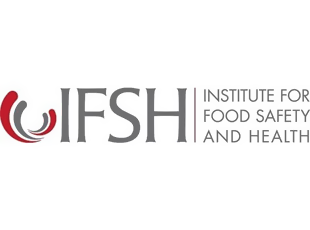Is this safe to eat? Foodborne illness on the rise
Better surveillance — being able to identify which pathogen or organism is most often associated with which foods — aids traceability and resource management.
 Foods such as raw oysters and sashimi may be delicacies, but they may also become the source of illness and health problems.
Foods such as raw oysters and sashimi may be delicacies, but they may also become the source of illness and health problems.
“Foodborne illness is more than just a stomachache,” said Robert Brackett, director of the Institute for Food Safety and Health at the Illinois Institute of Technology. “When someone gets a foodborne illness, it sometimes triggers an after effect in the individual. That can cause lifelong chronic disease and inflammatory diseases can be worse and can cost more than the initial illness,” he said.
Brackett was speaking at “Is This Safe to Eat?” a talk presented recently by the Chicago Council on Science and Technology with the Institute for Food Safety and Health.
An estimated 48 million people in the U.S. fall sick every year after exposure to known causes such norovirus or salmonella as well as unspecified agents, according to the 2011 estimates of the Centers for Disease Control and Prevention. That is one in six Americans. That number of cases may be dramatically underreported, Brackett said. Each year foodborne illness lands 128,000 people in the hospital and kills 3,000, according to CDC.
Salmonella, a bacterial infection, can be treated with antibiotics but viral infections such as the norovirus don’t respond to antibiotics.
The 2012 Foodborne Diseases Active Surveillance Network Data showed no change in the annual number of infections due to E. coli, Listeria, Salmonella and Yersinia registered in 2012 compared to 2006–2008, but a large increase in the number of Campylobacter and Vibrio infections — 14 percent and 43 percent respectively.
“The number of outbreaks looks like it’s increasing, but maybe this is also the detection that’s happening,” said Eric Larson, president of Safe Foods International Holdings and managing partner at Linden LLC, who was also part of the talk.
With better recognition of outbreaks, more imported foods and consumers open to trying new tastes, the challenges facing food safety are enormous. In addition, due to an aging population, 20 to 25 percent of people are at higher risk of succumbing to foodborne diseases, as are those who have chronic diseases or have gone through chemotherapy, transplants or surgeries.
“We really are looking at a different philosophy on who to protect,” Brackett said. “When I was in college working on food safety policy and law, they were based on the average person, a healthy 20-year-old man. That is not the face of our public today.”
Besides the government, industry and academia and research, consumers have a role in ensuring food safety too, Larson said. “I think this is maybe one of the weaker links in the chain. … It turns out the foods we like are also the foods microbes like, so we need to be careful in how we handle food,” he said.
“Anything that is grown will be attractive to microbes. The processed food supply is probably safer than fresh produce.”
Foodborne illness may never be completely stopped, but it can be managed. Better surveillance — being able to identify which pathogen or organism is most often associated with which foods — aids traceability and resource management. An estimated 1 million cases of salmonella infections are reported each year and the foods they originate from include chicken, tomatoes and beef.
“The regulatory agencies, with their limited budgets, have to figure out, where am I going to focus my preventative actions?” Brackett said. “You can’t do everything. It’s important to identify an attribution of where an organism is coming from most of the time so that you can focus your resources there better.”
Technology in the form of next-generation sequencing can identify the genome of pathogens within a few hours, so that not only will you know what the pathogen is, but be able to fingerprint it and link it to a particular strain associated with a certain area or type of food.
Changes in consumer preferences have driven innovation in food processing and safety, balancing new ways of producing foods and making them safer with keeping those foods tasting fresh (or fresh-like) and good. There remains a need for shelf life and improved functionality — that foods retain their nutritional content and bioactivity. Besides the traditional canning, modern technologies such as ionizing radiation, microwaves, ultraviolet light, pulsed electric field, cool plasma and high-pressure processing are being developed for use in killing pathogens or microbes in foods on a commercial scale.
The cost-effectiveness of these new technologies has to be evaluated, Brackett said. “In some cases, because the technology is new, they’re probably going to be more expensive than traditional methods,” he said. “But as they gain acceptance and are used more, the relative price comes down to the point where they are competitive with traditional methods. The other advantage is that they may use less water or electricity or provide higher quality products, so even if they cost more, they may return more on a better product.”
Despite everything the food industry and government does to ensure food safety, “a lot is in the consumers’ control,” Brackett said. “Once the consumer gets home it’s up to them to make sure they do hand washing and separate and keep things heated or cooled, so the consumer can undo the protections that have been put in before they purchased (the food).”
Source: news.medill.northwestern.edu


